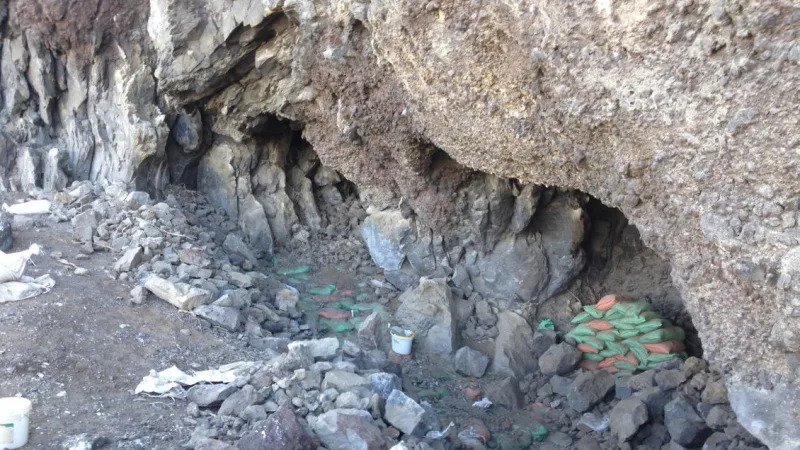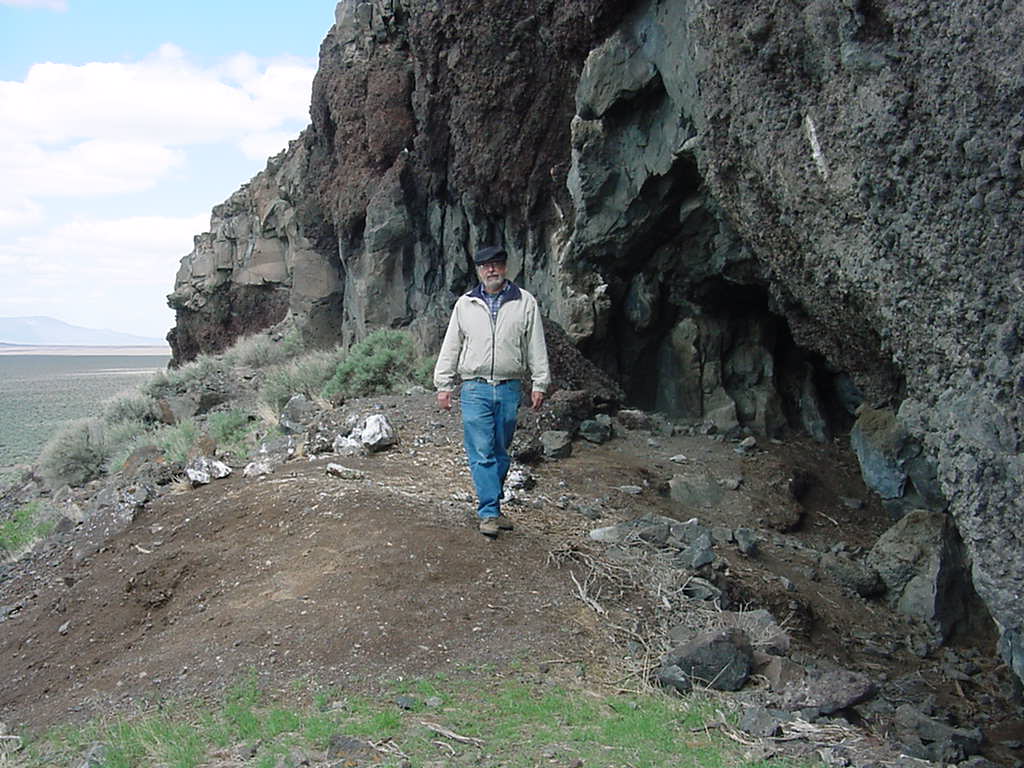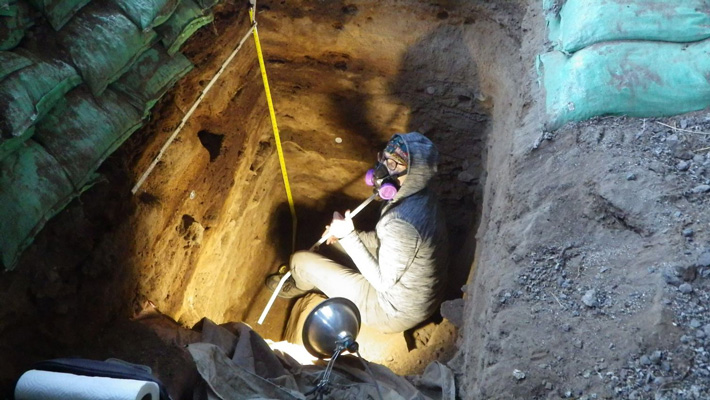14,000-Year-Old Poop Found in Oregon Cave Turns Out to Be Human
Gizmodo reports that archaeologists John Blong and Lisa-Marie Shillito of Newcastle University and their colleagues tested 21 coprolites unearthed in Oregon’s Paisley Caves for the presence of human sterols and bile, which are not soluble in water and thus chemically stable. Previous mitochondrial DNA testing of the ancient waste indicated that all of the samples were human in origin, but critics argued that DNA from later occupation of the cave may have washed into lower, older cave sediments and contaminated the samples.

“We address issues of potential DNA contamination through fecal lipid biomarker analysis, providing evidence that there likely was DNA moving from younger human occupations into older cave sediments and coprolites, but also confirming that people were camping at the caves as early as 14,200 years ago,” Blong said.
Genetic analysis of the coprolites suggested they came from humans, but some researchers questioned this result, citing possible contamination of the samples. The progeny of the poop remained unresolved for years, but new research is providing a fresh look at these stale but incredibly important piles of dung.

Humans first entered North America around the end of the last ice age, sometime between 20,000 and 15,000 years ago. Further confirmation of exactly when and how this migration took place would be a big deal, even if the evidence in question is literally full of crap. Coprolites, in order to last for so long, require an arid environment. Plenty of dry caves exist in western North America, but Paisley Caves are special in that they’re the only ones known to harbor evidence of human activity dating back to the Pleistocene-Holocene transition.
That said, this evidence is not great. Aside from the supposed human coprolites, the only other evidence at Paisley Caves from this time period tends to be flakes left over from the manufacturing of stone tools (which can’t be reliably dated) and butchery marks found on the bones of possible prey animals (which might actually be gnaw marks made by non-human animals). This is where ancient poop can help—when skeletal or other lines of evidence are either scarce or non-existent.
“The most convincing evidence for many archaeologists was a collection of preserved feces containing Native American mitochondrial DNA (mtDNA) deposited 14,400 to 14,000 years ago, making them the oldest directly dated human remains in the Western Hemisphere,” John Blong, a co-author of the new study and an archaeologist at Newcastle University, wrote in an email to Gizmodo. “This evidence was criticized, though, because several of the coprolites contained both human and dog mtDNA, suggesting that the human mtDNA may be the result of contamination from overlying layers. No one doubts that the coprolites are as old as the radiocarbon dates say they are, they just doubt they are human.”
That the prior mtDNA analysis was deficient is a distinct possibility. People and animals have been sharing these caves for millennia, so it’s very possible that genetic material from one pile of poop leached onto others.
“If you’ve ever watched a crime show on TV, you know that DNA can get everywhere,” said Blong. “Organisms constantly shed DNA in hair, skin cells, sweat, saliva, and so on.” At the same time, DNA is soluble in water, making it highly mobile in wet environments.
“Even though the interior of the Paisley Caves is very dry, we do see clues in the sediments that there were occasional, short-term wetting events,” Blong explained. “Imagine a storm with heavy rain that blows into the caves. The rain soaks into the cave sediments and dries a day or two later. Even in this short period of time, the water can transport human DNA left by a later group down into the deeper sediments representing an earlier time.”

Thankfully, DNA isn’t the only clue available to scientists, as coprolites also contain fecal lipid biomarkers, which can be pinned to certain types of animals. Moreover, lipids—organic molecular compounds that include fats, oils, steroids, and other biosignatures—are not very soluble in water, so they don’t tend to move around caves when things get wet. They’re also chemically stable, so they preserve well over long timescales.
“These characteristics make lipids a more reliable source for identifying human coprolites in a setting where cave sediments occasionally get wet,” said Blong.
With this in mind, Blong, along with study co-author Lisa-Marie Shillito and other colleagues, analyzed the lipid biomarkers found in 21 coprolite samples taken from Paisley Caves, all of which were previously found to be of human origin through mtDNA analysis. The researchers ran tests to determine sterol and bile content, in order to discern human feces from those produced by other animals. The researchers then compared these samples to the surrounding sediment, finding that minimal leaching occurred between the coprolites and the cave environment.
Of the 21 samples analyzed, 13 were identified as belonging to humans, two of which had been previously dated to the 14,000-year-old timeframe. Interestingly, one poop sample was linked to a panther and another to a lynx. Details of this analysis were published in Scientific Reports.

“Our study addresses persistent criticisms of the DNA evidence for the earliest human occupation of the Paisley Caves,” said Blong. “We address issues of potential DNA contamination through fecal lipid biomarker analysis, providing evidence that there likely was DNA moving from younger human occupations into older cave sediments and coprolites, but also confirming that people were camping at the caves as early as 14,200 years ago.”
Katelyn McDonough, a Ph.D. candidate in the Department of Anthropology at Texas A&M University, told Gizmodo that the fecal biomarker approach is “very exciting,” as lipids “preserve better and move less than other materials, such as DNA.” Overall, “this study both advances and showcases the fecal biomarker approach and makes a good case for the use of this method in tandem with DNA analysis in the future,” said McDonough, who wasn’t involved in the new research, though she has spent time working in Paisley Caves.
McDonough said she was “somewhat surprised” by the disagreement between the DNA and biomarker readings for some of the coprolites, “but that goes to show that we shouldn’t always rely solely on DNA and that multiple lines of evidence are best, when possible.”
For the new study, the authors also directly dated a cultural remnant found in the caves. A bulrush fragment, either from a basket or mat, was found to be roughly 14,000 years old, “further confirming the earliest human occupation,” said Blong. McDonough said the directly dated piece of basketry is “incredible” and an “extremely unique glimpse into plant use and textile production around 14,000 years ago.”
“We still have a lot to learn about when the first people arrived in the Americas, where they came from, and what routes they took to get here,” said Blong. “Our study adds to growing evidence that people were in the Americas more than 14,000 years ago, prior to the widespread Clovis culture.”
Indeed, the new paper is further evidence that humans reached this part of the world prior to the emergence of Clovis culture and its iconic stone tool technology. The Clovis people, who emerged around 11,500 to 11,000 years ago, were once considered to be the first inhabitants of North America, but this theory is increasingly coming into doubt. Archaeological evidence excavated in western Idaho suggests humans were in the region well over.
As Blong pointed out, these coprolites are the oldest directly dated human remains in the Western Hemisphere, but there’s other important archaeological evidence to consider. A study from last year, for example, showcased some of the earliest evidence of humans in North America, specifically at the Cooper’s Ferry site in western Idaho. Stone tools, animal bones, traces of fire pits, and other signs of human occupation were dated to between 16,560 and 15,280 years ago.
It’s also worth pointing out that the colossal ice sheet separating North America from Siberia began melting around 14,800 years ago. That humans were living in Oregon’s Paisley Caves soon afterward is not much of a surprise, but it’s good to have this extra bit of poopy evidence. Excitingly, these human coprolites have more stories to tell. As Blong told Gizmodo, he and his colleagues are currently analyzing the coprolites to figure out what these pioneering humans were eating.





